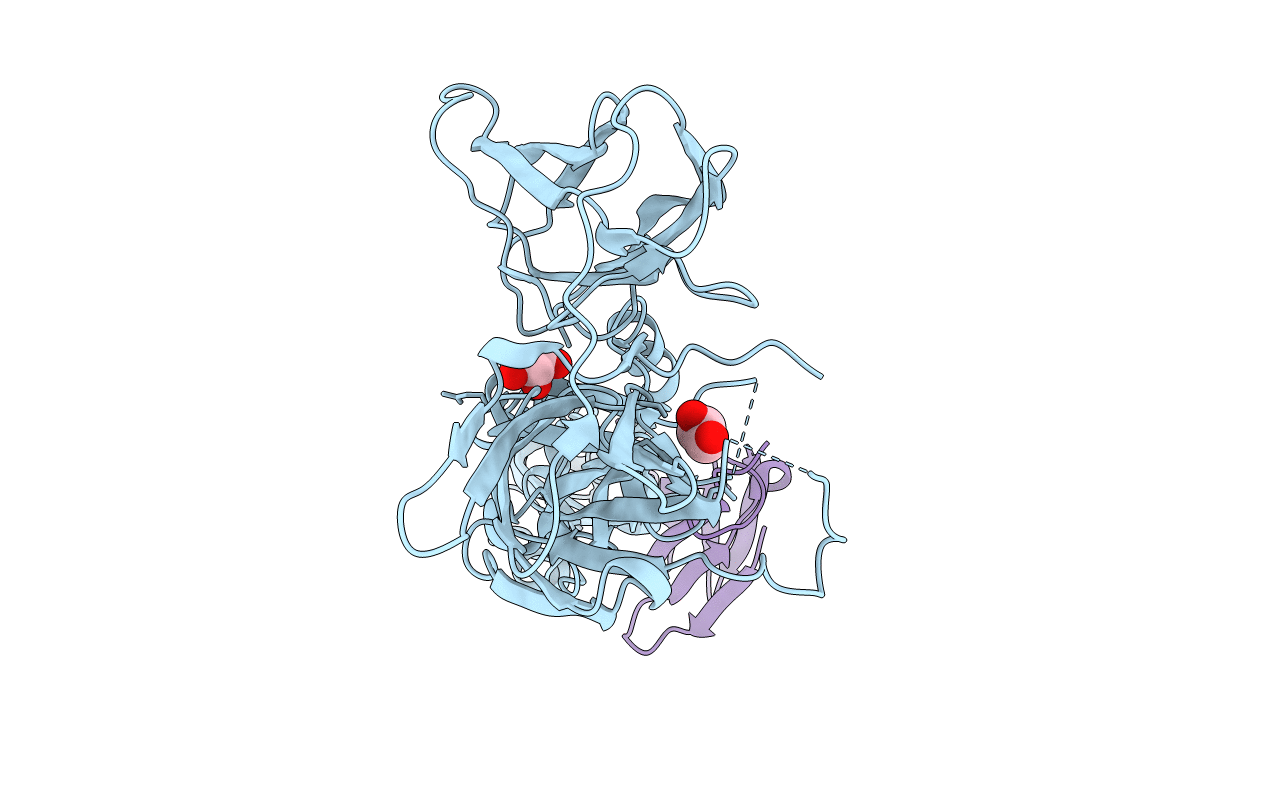
Deposition Date
2022-01-11
Release Date
2022-05-25
Last Version Date
2024-10-23
Entry Detail
PDB ID:
7QRG
Keywords:
Title:
Structure of the post-fusion complex between precursor membrane ectodomain (prM) and envelope ectodomain protein (E) from tick-borne encephalitis virus
Biological Source:
Source Organism:
Tick-borne encephalitis virus (WESTERN SUBTYPE) (Taxon ID: 11088)
Host Organism:
Method Details:
Experimental Method:
Resolution:
2.80 Å
R-Value Free:
0.26
R-Value Work:
0.22
R-Value Observed:
0.23
Space Group:
P 3 2 1


